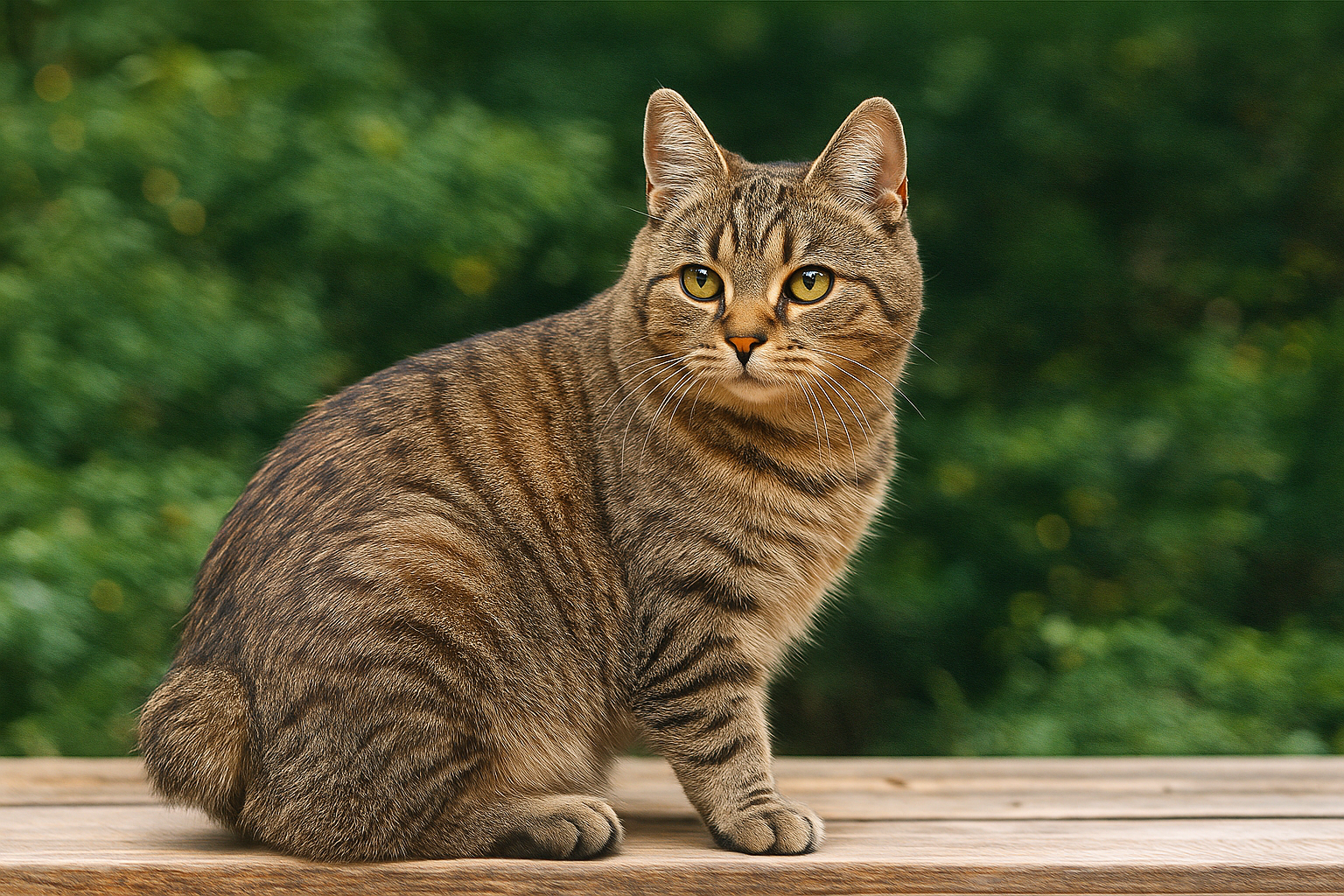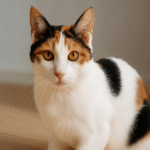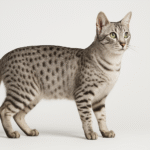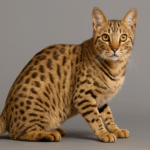With their round rumps and signature bunny-like hop, the Manx cat is one of the most distinctive felines around. Whether they’re born completely tailless (“rumpy”) or have just a short little stub (“stumpy”), their rounded rear gives them a look that’s unmistakably Manx. This rare tailless cat breed brings together charm, athleticism, and a deep island heritage. Originating from the Isle of Man, they’ve captivated cat lovers for centuries.
Manx cats are known for their loyalty, playful spirit, powerful back legs, and affectionate nature. Their unique genetics can also bring special care needs, especially when it comes to the spine and tail. Let’s explore what makes this breed so special—and what to expect if you’re considering adding one to your home.
Quick Breed Facts
- Origin: Isle of Man
- Breed registries: CFA, TICA
- Weight range: 8–12 pounds
- Lifespan: 12–16 years
- Coat: Short or long; double coat
- Colors and patterns: Many colors and patterns; no restrictions
- Eye color: Gold, green, copper, blue, or odd-eyed
- Grooming: Moderate (due to dense coat)
- Activity level: Medium to high
- Affection level: Very affectionate
- Vocality: Quiet to moderate
- Good with children: Yes
- Good with other pets: Usually, if socialized
History & Origin
The Manx cat breed comes from the Isle of Man, a small island nestled in the Irish Sea. Their signature trait — a missing or shortened tail — likely developed from a natural genetic mutation in the island’s early cat population. With few new cats arriving over time, the trait became more common due to inbreeding within the limited local gene pool.
These tailless cats became so iconic that they were named after their island home. As word spread, Manx cats were exported around the world and eventually gained recognition from major cat registries like CFA and TICA. A long-haired version of the breed also exists, called the Cymric cat, which shares the same playful personality but sports a thick, luxurious coat.
Personality & Temperament
Manx cats are known for being friendly, affectionate, and surprisingly loyal. Many owners describe them as “dog-like” — they’ll follow you from room to room, greet you at the door, and some even learn to play fetch or walk on a leash. They love being part of the action but aren’t overly needy, striking a nice balance between companionship and independence.
These cats are typically quiet, smart, and easygoing. They stay playful well into adulthood and thrive in homes where they get lots of interaction and mental stimulation. While most Manx cats are confident and outgoing, a few may be a bit shy around strangers at first, so early socialization helps them feel at ease.
What Do Manx Cats Look Like?
Manx cats have a round, sturdy body with a muscular build and a rear end that’s easy to spot — especially since many don’t have tails at all. Depending on the cat, their tail might be totally missing (“rumpy”), just a small bump (“riser”), a short stub (“stumpy”), or even a full tail (“longy”). While all versions are part of the breed, the tailless look is definitely the most famous.
They’re also known for their strong back legs, which are a bit longer than the front ones. This gives them a slight uphill slope and a bouncy, rabbit-like hop when they move. Their heads are round with big eyes, full cheeks, and ears that tilt slightly outward. Manx coats can be short or long (long-haired ones are often called Cymrics), and they come in just about every color and pattern — from tabby and tortie to solid white or black. Their thick double coat feels super soft and gives them a plush, well-padded look.
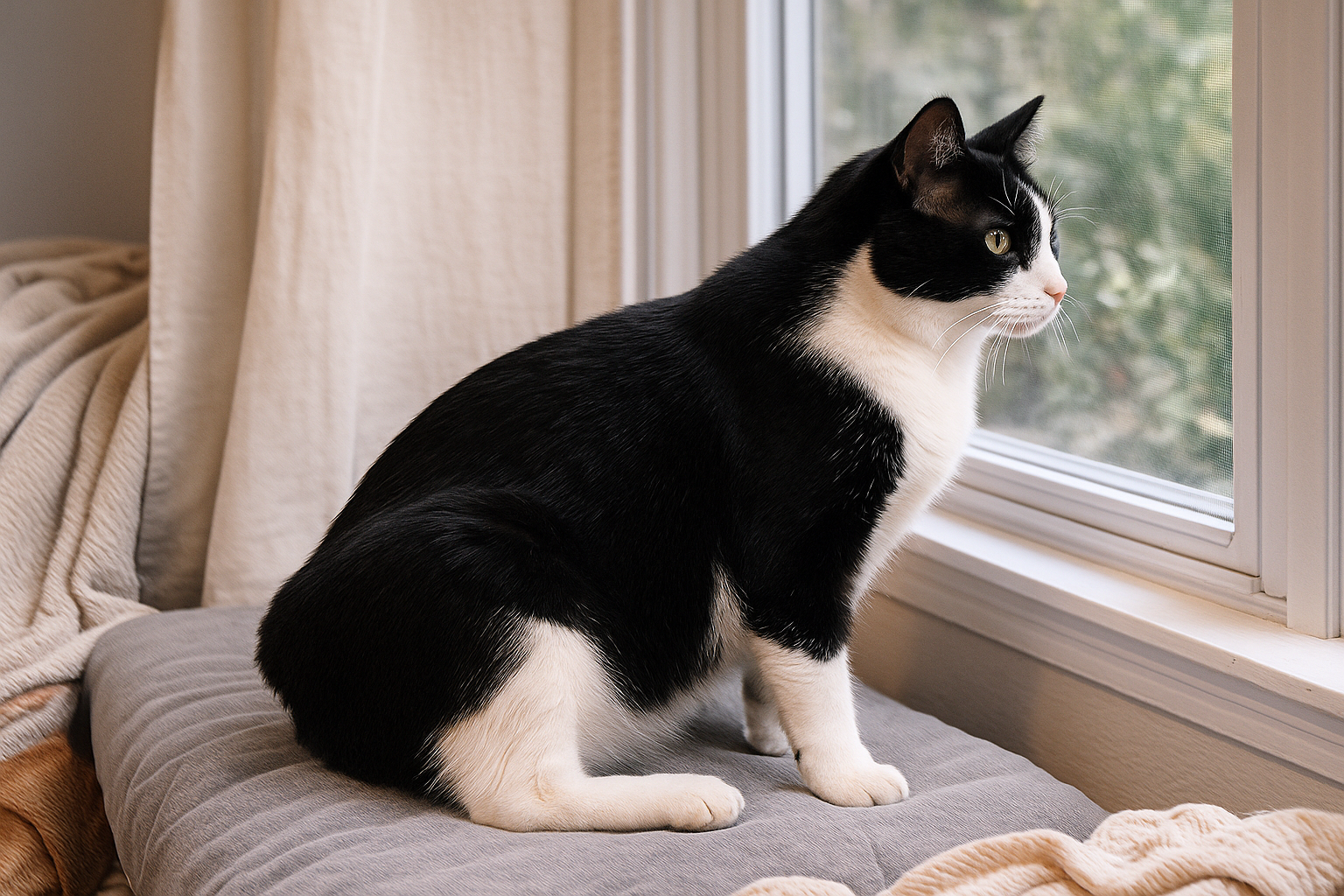
Activity & Play
Don’t let their round little rumps fool you — Manx cats are surprisingly athletic. With strong back legs and a compact, muscular build, they’re built for speed, jumping, and playful bursts of energy. Many love zooming through tunnels, leaping onto furniture, or stalking feather wands like pros. They also tend to be excellent mousers, thanks to their sharp hunting instincts.
Still, not every Manx is a nonstop ball of energy. Some are more low-key and happy with a few short play sessions each day before settling into their favorite nap spot. The key is offering enrichment that keeps their clever little brains busy — puzzle feeders, interactive toys, or even short training sessions can go a long way in keeping them mentally and physically healthy.
Grooming & Shedding
The Manx cat’s coat is dense and double-layered, offering great insulation but also requiring a bit of upkeep. Most have short, plush fur, while long-haired Manx (often called Cymrics) have soft, flowing coats that need a little more attention. A good brushing once or twice a week usually keeps things smooth and under control — though you may notice heavier shedding in spring and fall when they blow their coats.
Overall, they’re pretty low-maintenance, but it’s still smart to stay on top of nail trims, dental hygiene, and the occasional ear check. They tend to keep themselves quite clean, but your grooming sessions can also be a great time to bond.
Health & Lifespan
The same gene that gives the Manx cat its signature tailless look can also cause a condition known as Manx syndrome. This genetic issue affects the spine and, in some cats, can lead to problems like spina bifida, difficulty controlling the bladder or bowels, or even partial hind leg weakness or paralysis.
Manx cats with longer tails (called “longies”) are less likely to develop these issues. Responsible breeders carefully screen for spinal problems and never breed two completely tailless cats together. Thankfully, not every Manx is affected — and with proper care, a balanced diet, and regular vet visits, many live healthy lives that span anywhere from 12 to 16 years.
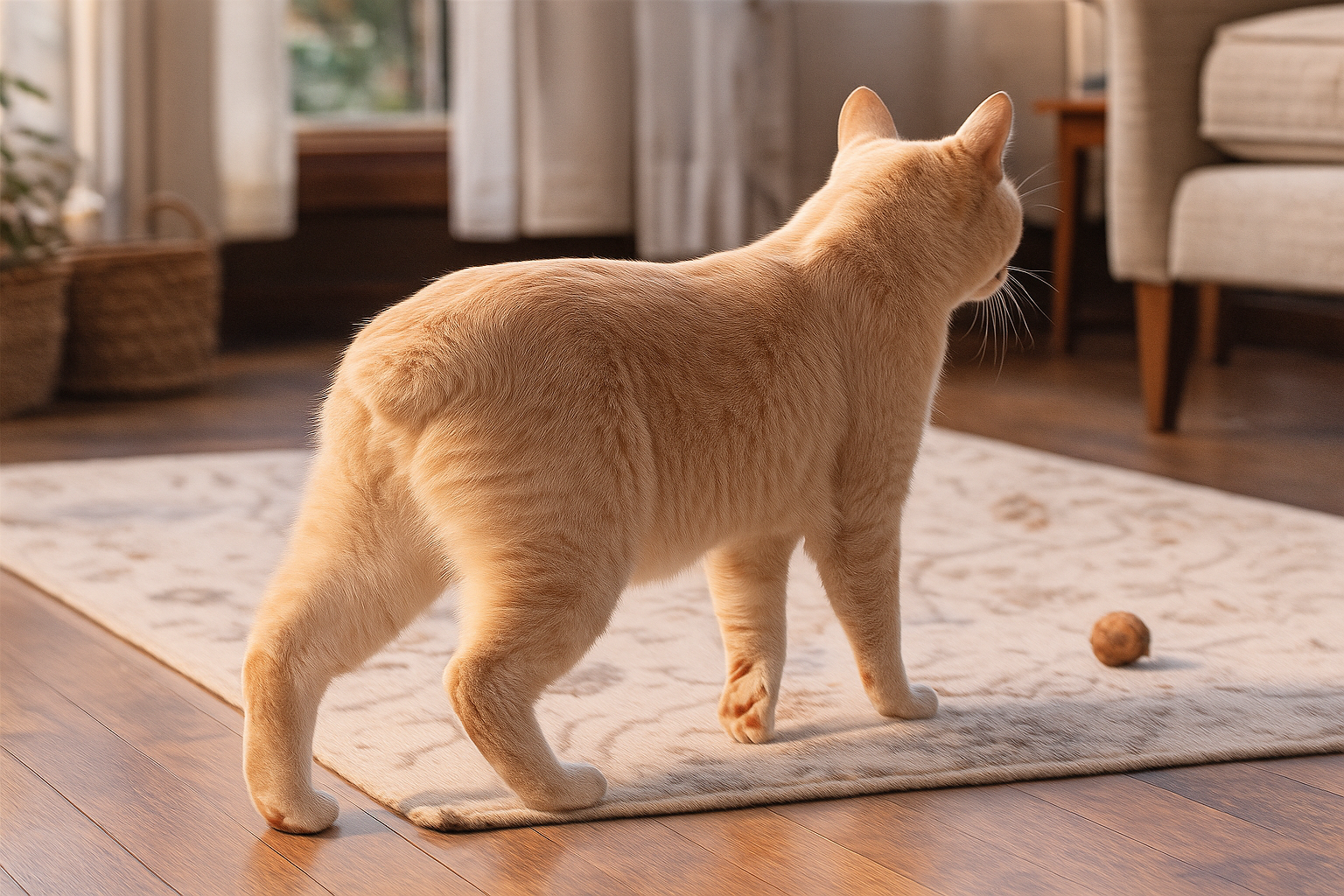
Are Manx Cats Good with Kids and Other Pets?
If you’re looking for a cat that fits right in with the whole family, Manx cats are a great choice. They’re affectionate, gentle, and form close bonds with their people — including kids. Many Manx love interactive play and will happily join in on games or follow children around the house. They’re patient with respectful handling and tend to be playful without being overwhelming.
Most Manx also do well with other pets, including cats and even dogs, especially when they’ve been properly socialized. Their laid-back, people-oriented personality makes them a good fit for multi-pet households and first-time cat parents alike. With the right introductions, they’re usually quick to make friends.
Recommended Supplies
Manx cats are strong, playful, and sometimes a little quirky — so it helps to have supplies that fit their unique needs. Look for sturdy cat trees, cozy beds with good back support, and toys that challenge both their body and brain. Because some Manx can have sensitive spines, soft surfaces and well-cushioned spots can make a big difference in how comfortable they feel day to day.
You don’t need to go overboard, but a few thoughtful items can really improve their daily routine. From comfy hideaways and slow-feeder bowls to climbing shelves and lounging spots, creating a Manx-friendly space is all about mixing play, rest, and comfort in a way that works for them.
Manx Cat FAQs
Why do Manx cats have no tail?
Manx cats are born with a genetic trait that affects how their tail develops. This unique gene can result in different tail types — some have no tail at all (“rumpy”), while others have short tails (“stumpy” or “riser”) or full-length tails (“longy”).
Are all Manx cats completely tailless?
Nope! Not all Manx are tailless. Some have just a bump or a short stub, while others may have a full tail. Breeders often focus on the completely tailless look, but all types are recognized and loved.
Are Manx cats hypoallergenic?
Not really. Manx cats aren’t considered hypoallergenic, but some people find their short, dense coats cause fewer reactions than other breeds. If you have allergies, it’s best to spend time with a Manx before adopting.
What is the price of a Manx cat?
The Manx cat price usually ranges from $300 to $1,200 depending on the breeder, tail type, and pedigree. Adopting from a rescue or shelter is often more affordable — and just as rewarding.
How do Manx cats compare to bobtail cats?
While Manx and bobtail cats both have short tails, they’re totally different breeds. The Kurilian Bobtail and Japanese Bobtail have kinked or curved tails caused by different genes. Only the Manx carries the gene linked to spinal development and Manx syndrome.
Is the Manx Cat Right for You?
If you’re looking for a loyal, intelligent, and delightfully quirky cat, the Manx might just be your perfect match. They’re affectionate without being clingy, playful without being wild, and full of personality from head to tail — or lack thereof. It’s important to understand their potential spinal health needs, so working with a responsible breeder or considering a rescue with experience in the breed is key.
Whether they’re racing down the hallway with their bunny-hop gait or curled up beside you on the couch, Manx cats bring a lot of heart into any home. They’re one of those rare breeds that are just as fun to watch as they are to love.

